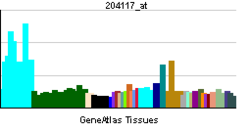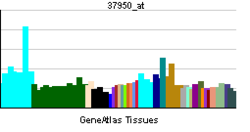Prolyl endopeptidase
| PREP | |||||||||||||||||
|---|---|---|---|---|---|---|---|---|---|---|---|---|---|---|---|---|---|
 |
|||||||||||||||||
|
|||||||||||||||||
| Identifiers | |||||||||||||||||
| Aliases | PREP, PE, PEP, prolyl endopeptidase | ||||||||||||||||
| External IDs | OMIM: 600400 MGI: 1270863 HomoloGene: 2042 GeneCards: PREP | ||||||||||||||||
|
|||||||||||||||||
| RNA expression pattern | |||||||||||||||||
 
|
|||||||||||||||||
| More reference expression data | |||||||||||||||||
| Orthologs | |||||||||||||||||
| Species | Human | Mouse | |||||||||||||||
| Entrez |
|
|
|||||||||||||||
| Ensembl |
|
|
|||||||||||||||
| UniProt |
|
|
|||||||||||||||
| RefSeq (mRNA) |
|
|
|||||||||||||||
| RefSeq (protein) |
|
|
|||||||||||||||
| Location (UCSC) | Chr 6: 105.28 – 105.4 Mb | Chr 10: 45.07 – 45.17 Mb | |||||||||||||||
| PubMed search | |||||||||||||||||
| prolyl oligopeptidase | |||||||||
|---|---|---|---|---|---|---|---|---|---|
| Identifiers | |||||||||
| EC number | 3.4.21.26 | ||||||||
| CAS number | 72162-84-6 | ||||||||
| Databases | |||||||||
| IntEnz | IntEnz view | ||||||||
| BRENDA | BRENDA entry | ||||||||
| ExPASy | NiceZyme view | ||||||||
| KEGG | KEGG entry | ||||||||
| MetaCyc | metabolic pathway | ||||||||
| PRIAM | profile | ||||||||
| PDB structures | RCSB PDB PDBe PDBsum | ||||||||
| Gene Ontology | AmiGO / EGO | ||||||||
|
|||||||||
| Search | |
|---|---|
| PMC | articles |
| PubMed | articles |
| NCBI | proteins |
Prolyl endopeptidase (PE) also known as prolyl oligopeptidase or post-proline cleaving enzyme is an enzyme that in humans is encoded by the PREP gene.
Prolyl endopeptidase is a large cytosolic enzyme that belongs to a distinct class of serine peptidases. It was first described in the cytosol of rabbit brain as an oligopeptidase, which degrades the nonapeptide bradykinin at the Pro-Phe bond. The enzyme is involved in the maturation and degradation of peptide hormones and neuropeptides such as alpha-melanocyte-stimulating hormone, luteinizing hormone-releasing hormone (LH-RH), thyrotropin-releasing hormone, angiotensin, neurotensin, , substance P and vasopressin. PREP cleaves peptide bonds at the C-terminal side of proline residues. Its activity is confined to action on oligopeptides of less than 10 kD and it has an absolute requirement for the trans-configuration of the peptide bond preceding proline.
...
Wikipedia
